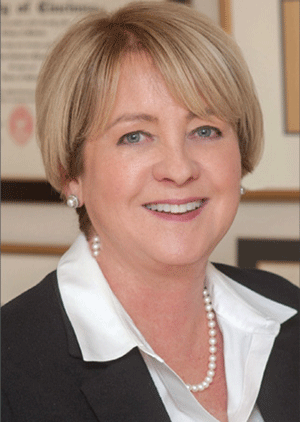My Turn: A New Era for Radiology
2021 requires worldwide engagement to find global solutions in medical imaging

Mary C. Mahoney, MD, is RSNA president and the Benjamin Felson Endowed Chair and Professor of Radiology at the University of Cincinnati (UC) College of Medicine in Cincinnati, Ohio. She is also chief of imaging services at UC Health in Cincinnati and is on the medical staff of several Cincinnati area institutions, including UC Medical Center, University Pointe Surgical Hospital, and West Chester Hospital in West Chester, Ohio.
As I start my term as RSNA president, I am conscious that the world has changed in ways I could never have predicted. This year has brought unprecedented challenges to radiologists and to the entire health care system.
The impact of COVID-19 has been far reaching, affecting us in every aspect of our personal and professional lives. It has brought the issue of health disparities to the forefront. If we’ve learned nothing else over the past year, it is that we need to re-think and re-imagine everything — who we are, what we do and how we do it.
I am excited to usher in a new focus for radiology and for RSNA. Our lives are different, the way we work is different, and even our thinking has been changed by all that we have witnessed. It is critically important that we look back and learn from the experiences of the past year. This year will be a time of unveiling new ideas and new technologies that redefine what it means to be a radiologist. Now more than ever, we must be efficient in our practices. Using the tenets of quality-based and patient-focused care, RSNA will help us create unique paths forward, with collaboration, inclusiveness and diversity at our core.
The way the radiology community came together to address the pandemic was inspiring. Radiologists and radiology departments from around the world came together to share their experiences and their challenges. The Medical Imaging and Data Resource Center (MIDRC), an open source database of medical images from COVID19 patients, was borne of collaboration through RSNA, ACR and AAPM. Other programs such as RadiologyInfo.org and Image Wisely® continue to thrive through RSNA’s partnership with other radiology societies, demonstrating our commitment to patient education and safety.
RSNA is redefining global outreach with our Global Learning Centers (GLCs). Designed to expand radiology education across the world, the RSNA GLC program was introduced in 2019. RSNA is partnering with established radiology departments based in low- or middle-income countries to create the centers, in which RSNA volunteer radiologists team with the GLC’s radiology department to design a customized curriculum implemented over three years.
Multiple examples of creative problem solving emerged during the worst of the pandemic. The near instantaneous pivot to a virtual environment for educating our learners and managing the day to day operations of our teams was impressive. It will be essential to continue expanding the capabilities of our technology — whether in terms of innovative teaching methods or increased efficiencies in our department workflows. RSNA is on the task, presenting new ideas through our family of five peer-reviewed journals, webinars, microlearning videos and our expansive annual meeting.
This past year has been a crash course in adaptability. I know we have all missed the tremendous opportunities that come of meeting in person at the recent RSNA annual meeting. I’m certainly hoping to travel into the radiology community later this year, and to connect with our colleagues across the globe.
This is a time in which we must engage with each other worldwide, finding global solutions to the challenges that face the medical imaging community. We also must ensure that our academic and society leaders reflect the diverse community we represent and strive to provide an equitable and inclusive community that serves the needs of all of our members. Together we can strengthen the foundation of the radiology community, better address the needs of our members, and ultimately provide better care to our patients.